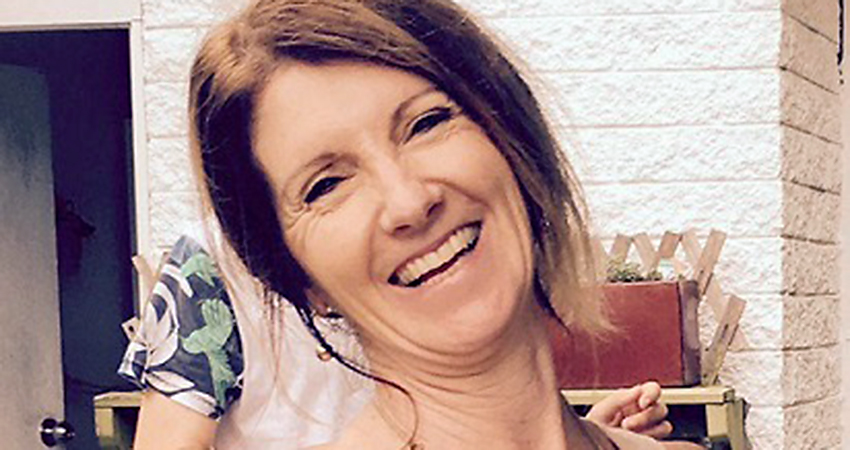Q&A with Jacqueline Forst
 On 8th September Australia marked R U OK? Day, a national day of action launched by a suicide prevention charity to remind people to support each other with their mental health. As mental health continues to rise up the national agenda, we spoke to mental health advocate Jacqui Forst about how we define mental health, what can be done to better protect it, and where the biggest challenges are.
On 8th September Australia marked R U OK? Day, a national day of action launched by a suicide prevention charity to remind people to support each other with their mental health. As mental health continues to rise up the national agenda, we spoke to mental health advocate Jacqui Forst about how we define mental health, what can be done to better protect it, and where the biggest challenges are.
Q: Can you describe your background and how you became interested in mental health?
I have what they call lived experience and I’ve been involved in the mental health sector for about five years. At that stage of my life, I had my father suffering with cancer, coping with elderly parents, and a member of my family who was going through significant mental health issues. I was in emergency departments and oncology departments and palliative care a lot and I came highly critical and a bit angry about the system and the lack of transparency, the lack of innovation, or lack of listening to carers, and what they call ‘consumers’, previously known as ‘patients’. Throwing rocks from the sidelines isn’t helpful so I decided to get involved in a more positive way. Now I am a patient carer advocate here in New South Wales, I’m involved in Lived Experience Australia and I’m also part of my local health district’s clinical governance council and the partnering with consumers council and I get involved in specific projects. Real and positive change can occur if we listen to people with lived experience.
Q: What do we mean by mental health – how should we define it?
Mental health is often confused with mental health conditions and it’s important to ensure we have a distinction there. The World Health Organisation defines it as a state of wellbeing, where an individual can realise their potential. They can cope with the ‘normal’ stresses of life, work productively and contribute to their community. Then there are mental health conditions and illnesses. That might be anxiety, which can lead to depression, which can lead to significant depression, bipolar, borderline personality disorder, all those different things. It’s a continuum. But to me it’s about being cognitively well, emotionally well and socially healthy. Those things are becoming more difficult for many people, not only because of our workplaces but because of what’s happening in society. I really believe that coping with normal stresses is becoming very difficult for many people because of the geopolitical situation, because of climate change which is becoming material and visible, and because of growing inequality. They say one in 10 people are suffering mental health illnesses around the world, and from my experience and my exposure I think that’s underrated.
Q: What misconceptions exist around mental health?
People are willing to talk about mental health to an extent but, in my own case, with my own family, discrimination is very real. You have to protect people’s privacy. Even though people may say all the right things, those who are suffering with their mental health can be ostracised and discriminated against, whether it’s in employment or accessing services or housing. Even though there’s more understanding of neurodiversity and the different facets of mental illness, it’s still a very hard road. There’s more talk about it now but there’s an awful lot that still needs to be done.
Q: Is enough being done to help people with their mental health, and where are the gaps?
There are so many gaps, and it’s important that everyone understands that we all have a role to play to help each other in this. We all might one day be consumers or be involved with mental health services, so I think engagement and understanding of what’s happening in your local environment is important. There are groups you can join such as suicide prevention networks, you can be part of what’s happening in the workplace or systemically, like myself in looking at what’s happening in the research area or your local health district or National Health Service, and try to advocate for new services and change. I would encourage everyone to look at what they can do. For example, if you just look at, say, counsellors in the school system, it’s often operated in such an old paradigm of mental health that the child has to reach out to the counsellor. They’re so worried about stigma and privacy and other things and whether the parents are going to be told that it’s very based on an old medical model of delivery of mental health. So how can we change it for youth, for older people, and in the workplace?
Q: How should employers get involved in actively supporting their staff’s mental health, and what benefits does that bring not only to the individual but also to the business?
There’s so much to be done about identity and gender, where we fit into the world. Workplaces develop value statements and mission statements but it has to be taken so much further than that because of what’s happening in our surrounding society, and what’s happening to people where they’re living on the edge or thinking there’s no hope. New power relationships, new ways of looking at innovation, and new communication pieces are really important, and workplaces can really beat the way in that regard. There’s also a role for organisations to do community work in a much greater capacity, whether it’s getting involved in climate change in your local environment or allowing staff to join and mental health redesign committee if they’re interested in that.
Q: Where is progress being made in helping people suffering mental health crises?
This is something that can happen to all of us. There is a push to greatly improve how people are responded to in emergency departments in the National Health Service here in Australia. It has been sometimes a very poor experience and that has led to more damage, but there are people like myself and others such as the police and ambulance services looking at how that can be improved. There are other options being developed where people can go if they can’t talk to their family or they feel lost. Often, if you are in crisis, you might have an emergency plan but it doesn’t make sense to you at the time, so other places are being developed for people to go. Here in our local environment, there is a house that’s been built close to our emergency department where people can go and there’ll be a person with lived experience there who can talk you through and help you and even walk you to the emergency department if that’s what’s needed. It’s just someone who understands the crisis situation and can help get you through. I think trying to inform and educate people about those different service design models is important, whatever location you’re in, and employers have a role to play in spreading the word about what’s available in your community.


